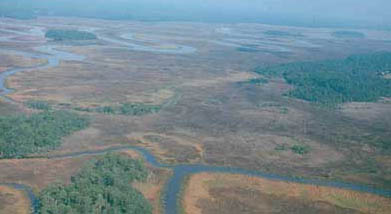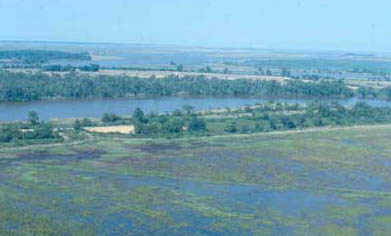Altamaha WMA
The Altamaha Wildlife Management Area (AWMA) comprises 27,078 acres of which 3,235 are within managed, tidal freshwater and brackish impoundments. It is one of the premier waterfowl migrating and wintering areas in Georgia. Although the primary objective of the AWMA is to provide high-quality habitat for wintering waterfowl, it also provides habitat for a great diversity of wetland-associated wildlife, including common snipe, common moorhens, purple gallinules, white ibises, herons, egrets, black-necked stilts, Mississippi kites, migratory shorebirds, and many others. 
The AWMA consists of 32.5 miles of dikes and 34 water control structures controlling 18 individual impoundments on 3 islands. Impoundments on Bulter and Champney Islands are freshwater, while those on Rhetts Island range from fresh to brackish depending on the flow of the Altamaha River. Management of these impoundments varies from permanently flooded conditions with periodic drawdowns to annual drawdown cycles. Some of the impoundments are managed under agricultural crops for waterfowl, while most are managed for production of native foods such as smartweeds, panic grasses, sedges, and wild millets. Timing of drawdowns vary from early spring to summer depending on the condition of impoundment and management objectives.

For more information, select one of the following projects:
Ducks Unlimited uses cookies to enhance your browsing experience, optimize site functionality, analyze traffic, and deliver personalized advertising through third parties. By continuing to use this site, you agree to our use of cookies. View Privacy Policy